In today’s digital age, QR codes have become an integral part of our everyday lives. These small, square barcodes are more than just a fancy pattern. They hold a world of possibilities and are used in a variety of ways to enhance convenience, efficiency, and accessibility.
Whether you realize it or not, QR codes are all around you. From the supermarket to the airport, these codes can be found on product packaging, event tickets, restaurant menus, and even educational resources. The versatility of QR codes makes them an invaluable tool for both individuals and businesses, revolutionizing how we interact with information and technology.
Key Takeaways:
- QR codes are widely used in everyday life to enhance convenience and accessibility.
- Mobile payments, product packaging, event check-ins, and loyalty programs are some of the common applications of QR codes.
- QR codes offer businesses a way to engage customers, drive marketing campaigns, and provide contactless services.
- In education and travel, QR codes facilitate access to supplementary materials, digital itineraries, and secure entry.
- The possibilities of QR codes are limitless, and their impact on everyday life is only expected to grow.
Mobile Payments and QR Codes
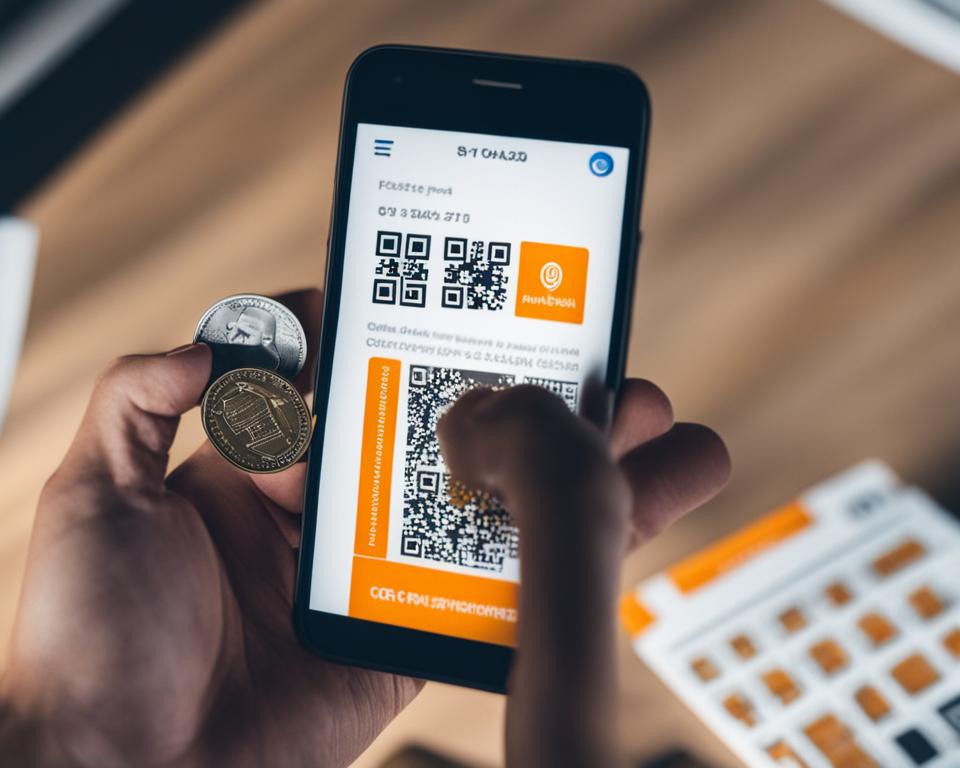
QR codes have revolutionized the way we make payments using our mobile devices. With just a simple scan, users can now complete transactions quickly and conveniently, eliminating the need for manual input or physical cards.
Mobile payment platforms such as Apple Pay, Google Pay, and Samsung Pay have integrated QR code technology, making it accessible to a wide range of smartphone users. These platforms generate a unique QR code that represents the user’s payment information, which can be scanned by a merchant’s device to initiate the payment.
One of the key advantages of using QR codes for mobile payments is the simplicity it offers. Users do not need to carry physical wallets or cards; all their payment information is securely stored on their mobile devices. Additionally, QR codes remove the need for contact between the customer’s device and the merchant’s device, promoting a contactless payment experience.
Moreover, QR codes enable businesses to accept mobile payments without the need for expensive point-of-sale (POS) systems or additional hardware. By simply displaying a QR code at the checkout counter or on an invoice, merchants can accept payments from customers using their preferred mobile payment app.
Let’s take a look at a comparison between mobile payments using QR codes and traditional cash transactions:
| Mobile Payments with QR Codes | Traditional Cash Transactions | |
|---|---|---|
| Convenience | Scan and pay with a mobile device | Count and exchange physical cash |
| Speed | Instant payment processing | Potential delays in counting change |
| Security | Encrypted payment information | Risk of loss or theft |
| Hygiene | Contactless payment experience | Physical exchange of cash |
As seen in the comparison table, QR code-based mobile payments offer numerous advantages over traditional cash transactions. They provide a seamless, secure, and hygienic payment experience for both consumers and merchants.
Product Packaging and QR Codes
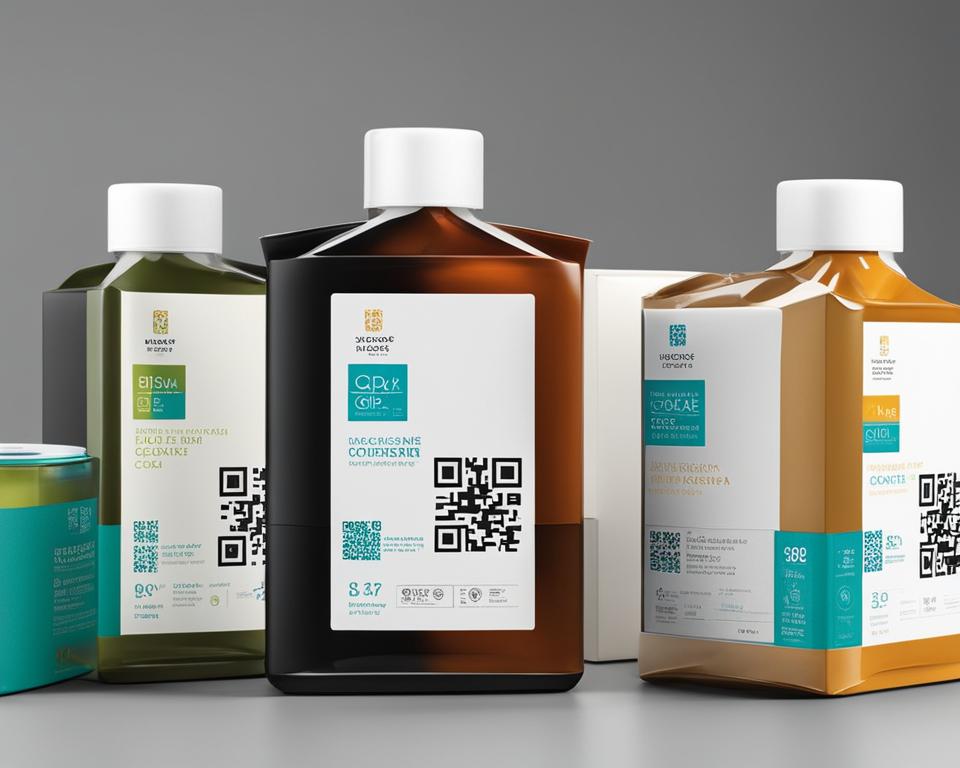
QR codes have become a common sight on product packaging, revolutionizing the way consumers interact with products. By scanning these codes with their smartphones, customers gain access to a wealth of information that goes beyond what can fit on a traditional label. From product details to usage instructions and promotions, QR codes provide a convenient and engaging way for consumers to learn more about the products they purchase.
Incorporating QR codes into product packaging offers several benefits for both businesses and consumers. For businesses, it allows for a more efficient use of space on the packaging, as they can now provide additional information without cluttering the design. This opens up opportunities for companies to communicate important details about their products, such as ingredients, nutritional information, and manufacturing processes, which can be critical for consumers with specific dietary restrictions or preferences.
Moreover, QR codes can serve as a gateway to enhanced customer experiences. By scanning the code, consumers can access instructional videos, virtual demos, or customer reviews, enabling them to make more informed purchasing decisions. This interactive element not only increases customer engagement but also fosters brand loyalty.
“QR codes on product packaging offer a new level of convenience and transparency, empowering consumers to make informed choices and truly connect with the brands they love.”
Additionally, QR codes can be utilized to provide special offers or promotions to customers. By scanning the code on the packaging, consumers can unlock exclusive discounts, loyalty rewards, or participate in contests. This creates an incentive for customers to engage with the product and the brand beyond the initial purchase, fostering a sense of excitement and loyalty.
| Benefits of QR Codes on Product Packaging | Examples |
|---|---|
| Access to detailed product information | Detailed ingredient lists, allergen information, and nutritional facts |
| Interactive customer experiences | Virtual product demos, instructional videos, and customer reviews |
| Exclusive promotions and discounts | Unlocking loyalty rewards, special offers, and participation in contests |
| Enhanced brand loyalty | Creating an incentive for customers to engage beyond the initial purchase |
QR codes on product packaging have transformed the way consumers engage with products, offering a seamless and dynamic experience. As more brands recognize the potential of QR codes, we can expect to see innovative and creative implementations that further enhance customer satisfaction and brand loyalty.
Event Check-Ins and QR Codes

Event check-ins can often be a cumbersome process, with long queues and the need for manual ticket verification. However, QR codes have revolutionized the way events are managed, providing a seamless check-in experience for attendees.
By incorporating QR codes into event tickets or registration confirmation emails, organizers can simplify the check-in process. Attendees can simply scan their QR codes using their smartphones or tablets, eliminating the need for physical tickets or printed documents.
This efficient method not only reduces waiting times but also improves the overall event experience. Attendees can quickly and securely verify their attendance, allowing them to swiftly access the event venue and start enjoying the activities.
Additionally, QR codes enable event organizers to gather valuable data and insights. They can monitor attendance rates, track entry points, and identify popular sessions or areas within the event. This information helps organizers enhance future events and tailor their offerings to better meet attendees’ preferences and expectations.
With QR codes, event check-ins become a hassle-free process, saving time for both organizers and attendees while enhancing the overall event experience.
Benefits of QR Codes for Event Check-Ins:
- Quick and seamless check-in process
- Elimination of physical tickets or printed documents
- Reduced waiting times and improved attendee satisfaction
- Efficient data collection for event analysis and improvement
Loyalty Programs and QR Codes
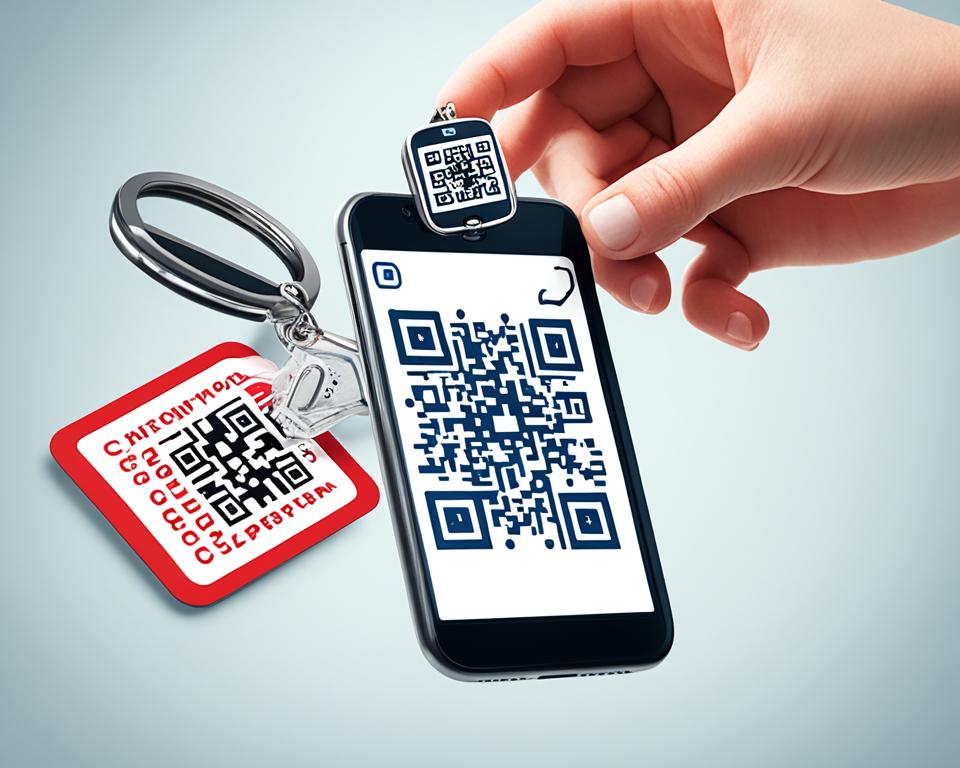
In today’s competitive business landscape, customer loyalty has become a crucial aspect of sustaining success. Companies are constantly seeking innovative ways to engage and reward their loyal customers. One effective strategy that has gained popularity is the integration of QR codes in loyalty programs.
QR codes provide a seamless and convenient way for customers to participate in loyalty programs. By simply scanning a QR code, customers can access exclusive perks, earn rewards points, and receive personalized offers tailored to their preferences.
One of the key advantages of using QR codes in loyalty programs is the ease of tracking and managing loyalty points. Gone are the days of cumbersome physical loyalty cards or punch cards that can be lost or forgotten. With QR codes, customers can easily redeem their rewards directly from their mobile devices, eliminating the need for physical cards or additional steps.
Furthermore, QR codes enable businesses to gather valuable data and insights into customer behavior and preferences. This data can be used to personalize offers and create targeted marketing campaigns, further enhancing the customer experience and strengthening customer loyalty.
“QR codes have revolutionized our loyalty program. Customers love the simplicity and convenience of earning rewards by simply scanning a QR code, and we have seen a significant increase in customer engagement and loyalty since implementing this technology.”
– Jane Robertson, Marketing Manager at XYZ Retail
QR codes also provide an opportunity for businesses to enhance their branding and create a unique customer experience. By incorporating QR codes into loyalty program materials such as membership cards, emails, or even product packaging, businesses can showcase their commitment to innovation and technology.
To illustrate the impact of QR codes in loyalty programs, consider the following example:
| Loyalty Program | Traditional Method | QR Code Method |
|---|---|---|
| Points Redemption | Physical loyalty card required for point redemption | Scan QR code to instantly redeem points from a mobile device |
| Personalized Offers | Email newsletters with generic offers | Exclusive QR code offers tailored to individual preferences |
| Data Collection | Manual collection of customer information | Automated data collection through QR code scans |
| Customer Experience | Physical cards can be lost or forgotten | No need for physical cards, quick and convenient redemption process |
The table above highlights the clear advantages of leveraging QR codes in loyalty programs, ultimately resulting in higher customer satisfaction, increased customer retention, and a competitive edge in the market.
Considering the numerous benefits and the growing popularity of QR codes, it is no surprise that businesses across various industries are embracing this technology to enhance their loyalty programs. By incorporating QR codes, companies can create a seamless and rewarding experience for their customers, fostering long-term loyalty and driving business growth.
Marketing Campaigns and QR Codes
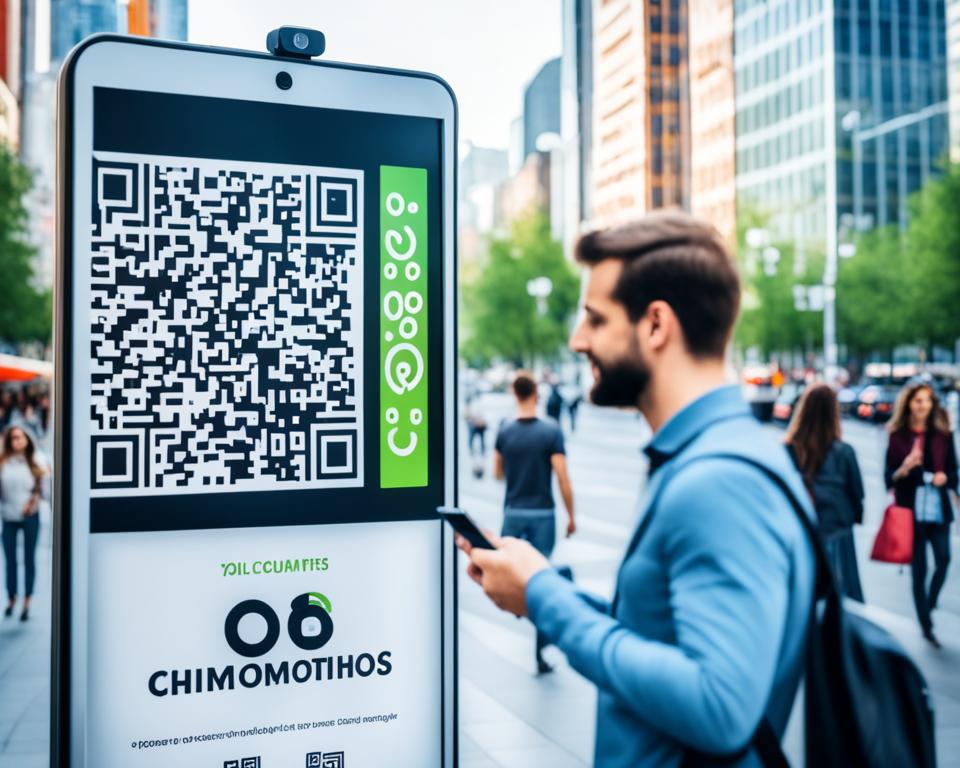
QR codes have revolutionized marketing campaigns, offering businesses innovative ways to engage customers and deliver targeted content. By incorporating QR codes into their marketing strategies, companies can effectively bridge the gap between offline and online interactions, providing seamless experiences for consumers.
The power of QR codes lies in their ability to connect with consumers in the physical world and direct them to digital platforms. Through a simple scan, customers can access exclusive discounts, interactive experiences, and personalized content, all tailored to their interests and preferences.
QR codes have become an essential tool in marketing campaigns, allowing businesses to enhance customer engagement and drive conversions.
Interactive Experiences
QR codes enable businesses to create interactive experiences that captivate their target audience. By linking QR codes to engaging content such as videos, quizzes, or augmented reality experiences, companies can provide customers with immersive brand interactions. This not only strengthens brand affinity but also encourages social sharing, extending the reach of marketing campaigns.
Discounts and Exclusive Content
QR codes offer a convenient way for businesses to share discounts, promotions, and exclusive content with their customers. Whether it’s a limited-time offer or a sneak peek at new products, QR codes provide instant access to these exclusive benefits. This not only incentivizes immediate action but also fosters a sense of loyalty among customers.
Data Collection and Analysis
Marketing campaigns integrated with QR codes allow businesses to collect valuable customer data. By tracking and analyzing QR code interactions, companies can gain insights into consumer behavior and preferences. This data can be used to optimize marketing strategies, tailor offerings to specific customer segments, and measure the effectiveness of campaigns.
Overall, QR codes have proven to be a versatile and effective tool for businesses to enhance their marketing campaigns. By leveraging the power of QR codes, companies can create engaging experiences, drive customer engagement, and gain valuable insights into their target audience.
| Benefits of QR Codes in Marketing Campaigns | Examples |
|---|---|
| Enhanced customer engagement | Interactive quizzes, games, and contests |
| Increased brand affinity and social sharing | Augmented reality experiences, interactive videos |
| Instant access to discounts and promotions | Exclusive offers, limited-time discounts |
| Valuable data collection and analysis | Tracking QR code interactions, customer profiling |
Contactless Menus and QR Codes
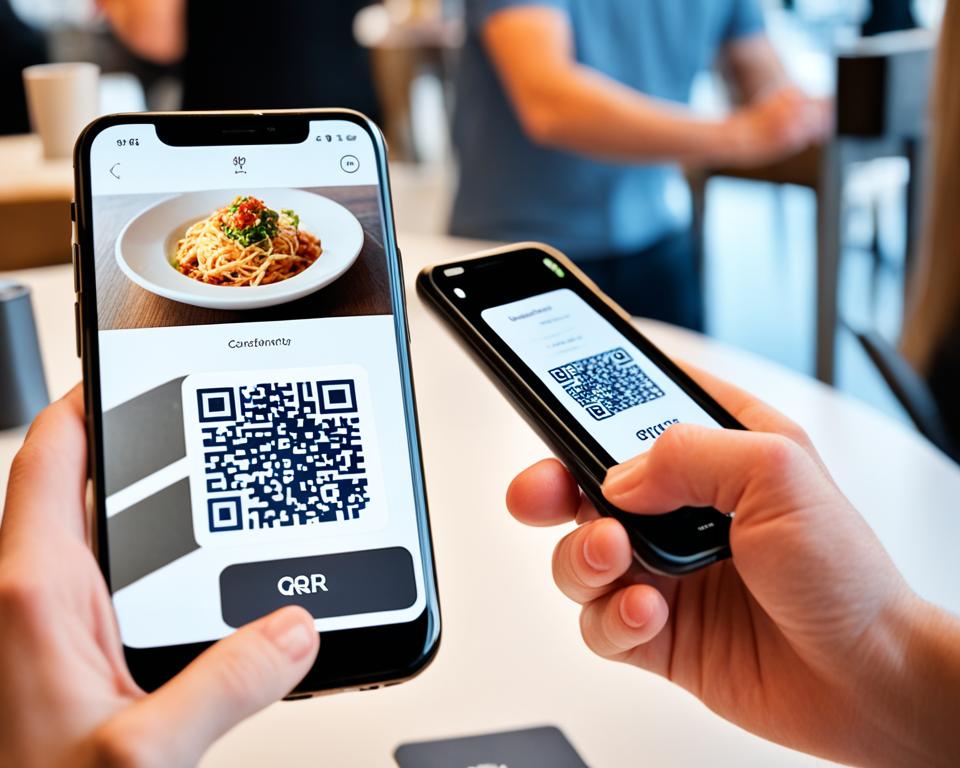
With the increasing need for enhanced hygiene practices in restaurants, contactless menus have become a popular solution. QR codes are at the forefront of this trend, revolutionizing the way customers browse and order food.
By scanning a QR code displayed on the table or provided with a receipt, diners can access the restaurant’s menu directly on their mobile devices. This eliminates the need to handle physical menus, reducing the risk of spreading germs. It’s a simple, convenient, and safe way to cater to the evolving needs of customers in the post-pandemic world.
Implementing contactless menus through QR codes offers numerous benefits for both customers and restaurant owners:
- Improved Hygiene: By eliminating the need for physical menus, QR codes minimize the risk of cross-contamination and the spread of germs.
- Convenience and Efficiency: QR codes provide customers with instant access to the menu, enabling them to browse dish descriptions, allergen information, and even view food images if available.
- Reduced Costs: Restaurants save on printing costs and the resources required for menu updates, as QR codes allow for easy menu modifications and real-time changes.
- Enhanced Customer Experience: QR codes can be used to display additional information, such as nutritional facts, chef recommendations, and customer reviews, creating a more engaging dining experience.
“QR codes have revolutionized contactless menus, providing a simple and safe way for customers to browse and order food.”
Restaurants can further leverage QR codes for promotional purposes:
Promotions and Discounts
QR codes can be linked to special offers, discounts, and loyalty programs, encouraging customers to try new dishes or return for future visits.
In summary, contactless menus powered by QR codes have gained popularity as a safer, more efficient, and engaging option for both customers and restaurant owners. By embracing this innovative technology, the dining experience is enhanced, and hygiene concerns are addressed, creating a win-win situation.
| Benefits of Contactless Menus with QR Codes | Description |
|---|---|
| Improved Hygiene | Minimizes the risk of cross-contamination and the spread of germs. |
| Convenience and Efficiency | Instant access to the menu, allergen information, and food images. |
| Reduced Costs | Saves on printing and menu update expenses. |
| Enhanced Customer Experience | Displays additional information like nutritional facts and customer reviews. |
Travel and QR Codes

QR codes have revolutionized the travel industry, streamlining processes and enhancing the overall travel experience. From electronic boarding passes to digital itineraries, the incorporation of QR codes has simplified travel logistics and provided travelers with a seamless journey.
Electronic Boarding Passes
One of the most convenient applications of QR codes in travel is the use of electronic boarding passes. Instead of printing physical tickets, passengers can now conveniently store their boarding passes on their smartphones. With a simple scan at the airport gate, travelers can quickly access their flight information, reducing the need for paper documents and enhancing efficiency.
Digital Itineraries
QR codes are also employed in digital itineraries, providing travelers with a comprehensive overview of their trip details. By scanning the code on their mobile devices, travelers can access their itinerary, including flight details, hotel reservations, and activity schedules. This not only eliminates the hassle of carrying physical documents but also allows for easy updates and modifications.
Contact Tracing at Airports and Hotels
In response to the global pandemic, QR codes have been adopted for contact tracing purposes at airports and hotels. Travelers and guests are required to scan QR codes upon arrival, providing their contact information for tracking purposes. This enables authorities to efficiently trace and notify individuals in the event of potential exposure, contributing to the overall safety and well-being of travelers.
| Benefits of QR Codes in Travel | Examples |
|---|---|
| Convenience | Electronic boarding passes |
| Efficiency | Digital itineraries |
| Enhanced Safety | Contact tracing at airports and hotels |
QR codes have undoubtedly transformed the way we travel. With their ability to digitize important travel documents and streamline processes, they have become an indispensable tool for both travelers and industry professionals.
Educational Resources and QR Codes

In today’s digital age, QR codes have found their way into the realm of education, revolutionizing the way students access educational resources. With a simple scan, QR codes provide a gateway to a vast array of supplementary materials, interactive learning experiences, and quick access to relevant websites.
Whether it’s in the classroom or during remote learning, QR codes offer an innovative solution for educators to enhance their teaching methods and engage students in a dynamic and interactive way. By incorporating QR codes into educational materials, teachers can provide students with a seamless experience of accessing additional resources that complement the curriculum.
QR codes bring added value to educational resources by:
- Enabling quick access to supplementary materials: Students can scan a QR code printed in their textbooks or worksheets to instantly access additional readings, videos, or online simulations that deepen their understanding of the topic.
- Facilitating interactive learning experiences: QR codes can be used to create interactive quizzes, puzzles, or scavenger hunts, allowing students to actively engage with the content and test their knowledge.
- Providing access to relevant websites: QR codes placed next to references or citations in textbooks can lead students to reputable websites for further research, promoting critical thinking and independent learning.
QR codes also empower students to take control of their own education by providing a seamless transition from traditional printed materials to digital content. Students can access educational resources at their own pace, review content outside of the classroom, and explore topics of interest in more depth.
The Potential of QR Codes in Education
“QR codes have the potential to transform the educational landscape, making learning more interactive, accessible, and personalized. They bridge the gap between physical and digital resources, allowing educators to enrich their lessons and students to explore beyond the boundaries of textbooks.”
As we look to the future, the possibilities for QR codes in education are endless. From gamified learning experiences to real-time feedback on assignments, QR codes have the potential to revolutionize how students learn and access educational resources.
By embracing QR codes in the classroom, educators can create a more engaging and interactive learning environment that nurtures students’ curiosity and fosters a lifelong love for learning.
Access Control and QR Codes
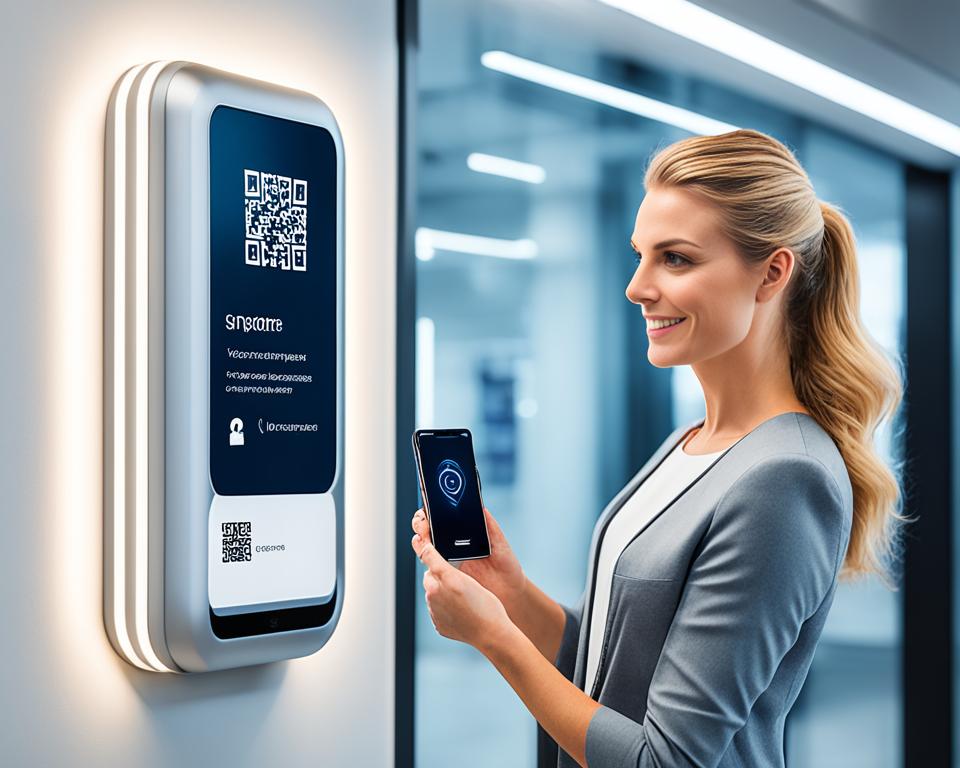
QR codes have revolutionized access control systems, providing a secure and efficient way for authorized personnel to gain entry to restricted areas. By utilizing QR codes, organizations can enhance security measures while streamlining the access process.
With the help of QR codes, access control systems can validate credentials and grant access only to authorized individuals. When a person needs to enter a secured facility or building, they can simply scan a QR code using their smartphone or a dedicated QR code reader. This action triggers the access control system to verify the information encoded in the QR code and determine whether access should be granted or denied.
One of the key advantages of using QR codes for access control is the ease and speed of operation. Rather than relying on physical keys, access cards, or biometric scans, QR codes provide a convenient and touchless solution. Employees or visitors can simply present their QR code for scanning, eliminating the need for physical interaction and reducing the risk of transmission of germs or viruses.
In addition to being user-friendly, QR codes also offer flexibility in terms of access permissions. Access control systems can be configured to grant different levels of access to different individuals or groups. For example, an employee may have access to specific floors or departments, while a visitor may only be granted access to common areas.
| Benefits of QR Codes for Access Control |
|---|
| Streamlines access process |
| Enhances security measures |
| Convenient and touchless solution |
| Offers flexibility in access permissions |
“QR codes have transformed access control, making it more efficient, secure, and convenient. Their adoption in various industries has revolutionized the way organizations manage access to their premises.”
Moreover, QR codes can be easily generated and distributed to authorized personnel. Access control systems can generate unique QR codes for each individual, making it easier to track and manage access activities. In case of a security breach or access violation, the unique QR codes can help identify the responsible party.
From offices and hotels to educational institutions and healthcare facilities, QR codes have become an integral part of access control systems. Their versatility, simplicity, and reliability make them an ideal solution for ensuring secure access to restricted areas.
In the next section, we will explore how QR codes are transforming the way educational resources are accessed and utilized.
Conclusion
QR codes have become an integral part of our everyday lives, offering a wide range of applications that enhance convenience and efficiency. Whether it’s facilitating mobile payments, providing access to product information, streamlining event check-ins, or powering loyalty programs, QR codes have proven to be immensely versatile.
The effectiveness of QR codes lies in their simplicity and ease of use. With just a quick scan using a smartphone, users can access valuable information, unlock exclusive offers, or complete transactions seamlessly. This technology has paved the way for contactless experiences, ensuring safety and hygiene in various settings such as restaurants and travel.
Looking ahead, the potential for QR codes is limitless. As businesses and consumers continue to embrace digital solutions, QR codes are poised for further growth and innovation. They offer a cost-effective and user-friendly way to bridge the gap between offline and online experiences, enabling businesses to engage with their customers in meaningful ways.
In conclusion, QR codes have revolutionized the way we interact with the world around us. From everyday tasks to elaborate marketing campaigns, these codes have simplified and streamlined various processes, making our lives more convenient and connected. Embracing the power of QR codes opens up a world of possibilities, making it an essential tool for businesses and individuals alike.
FAQ
How are QR codes used in mobile payments?
QR codes are used in mobile payments by generating a unique QR code that represents a specific transaction. Customers can scan the QR code on their mobile devices to make quick and secure payments.
How are QR codes incorporated into product packaging?
QR codes are incorporated into product packaging to provide consumers with access to valuable information. By scanning the QR code, consumers can retrieve details about the product, view usage instructions, and even redeem special promotions.
How do QR codes simplify event check-ins?
QR codes simplify event check-ins by allowing attendees to easily scan their ticket or registration code. This eliminates the need for physical tickets or printed passes, reducing queues and enhancing the overall event experience.
How are QR codes utilized in loyalty programs?
QR codes are used in loyalty programs to enable customers to earn rewards and receive personalized offers. Customers can scan the QR code provided by the business to track their loyalty points and enjoy exclusive benefits.
How do businesses leverage QR codes in marketing campaigns?
Businesses leverage QR codes in marketing campaigns by creating interactive experiences for customers. QR codes can lead customers to discounts, exclusive content, and online promotions, enhancing customer engagement and driving sales.
How do QR codes replace traditional menus in restaurants?
QR codes replace traditional menus in restaurants by allowing customers to view the menu on their mobile devices. Customers can simply scan the QR code on the table to access the digital menu, reducing physical contact and improving hygiene.
How are QR codes used in travel?
QR codes play a significant role in travel by providing electronic boarding passes, digital itineraries, and contact tracing at airports and hotels. Travelers can conveniently access these QR codes on their mobile devices for a smoother travel experience.
How are QR codes utilized in education?
QR codes are utilized in education to provide access to supplementary resources and interactive learning experiences. Students can scan QR codes found in textbooks or on class materials to access relevant websites, videos, or additional study materials.
How are QR codes used for access control?
QR codes are used for secure access control in restricted areas or buildings. Authorized personnel can scan their unique QR code to gain entry, providing an efficient and convenient access management system.




